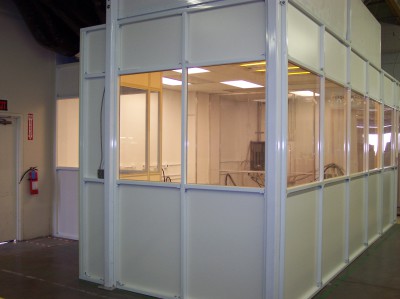The White Room concept has very easily been associated with operating theaters, the nuclear, microelectronic or pharmaceutical industries, since years ago they were exclusively seen in this type of sector.
The cleanroom, or what at that time called it clean room, appeared at the end of the nineteenth century when surgeons and microbiologists realized that the infections occurred in operating rooms are considerably reduced when there was a ventilation. They also discovered the need to sterilize surgical instruments and to apply certain clothing and hygiene standards to any user who enters the room.

It has rained a lot since then, and later, with the advances in aerospace research, controlled environment spaces were needed, developing HEPA filtration, which was an advance. Today, the demands for environmental quality in controlled environment rooms that are used in different sectors of industrial production have increased, and the design of the installation comes into play to obtain the required level of quality.
What is a White Room?
A Clean Room Rental Murieta is a room specially designed for low levels of contamination and therefore must have strictly controlled environmental parameters.
The clean room concept arises from the need to have an enclosure in which certain processes and operations can be carried out safely for the quality of these products, avoiding any type of contamination.
This type of installation can be made up of one or more rooms whose levels of air cleanliness, differential pressure, temperature and other climatic variables such as relative humidity, sound and light levels will be kept within specific limits, depending on each room. .
Conditions of a White Room depending on its level:
– Microbial exclusion: to prevent contamination of sterile materials, components and surfaces in aseptic operations.
– Microbial limitation: in occupied areas close to aseptic operations, to minimize the introduction of contamination in the exclusion zone.
– Particle exclusion: often associated with microbial exclusion, it is also applied independently to materials washed before sterilization.
– Particle limitation: to reduce the load of particles on elements before washing.
– Exclude cross contamination: to prevent contamination of one material or product with another.
– Exclusion of external contamination, including that which may be produced by the operators themselves.
And what are the White Rooms used for?
The main uses of Clean Rooms in a Controlled environment are related to certain manufacturing processes for specific products and research.
Sectors using controlled environment rooms:
- Food Industry
– Drinks
– Meat products
– Pre-cooked
– Sliced
- Bio-pharmaceutical sector
– Human pharmacy
– Veterinary Pharmacy
– Cosmetics
– Chemistry
– Biotechnology
– Animalario
Regulations regarding controlled environment rooms
To achieve low or zero levels of contamination, the design and construction of these rooms is decisive, which must be in accordance with the criteria established by the regulations related to this type of installation and those related to the use that the White Room will have.
The contract manufacturer describes good manufacturing practices for medical products, medicines, food and drugs, cosmetics, in their final forms of sale to the public, including large-scale processes in hospitals.
